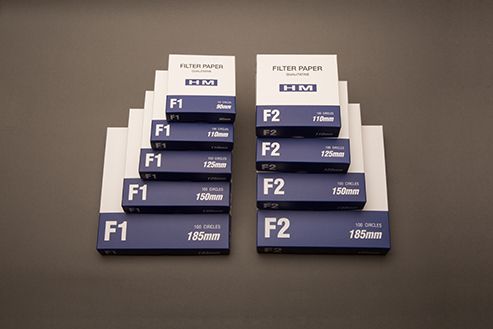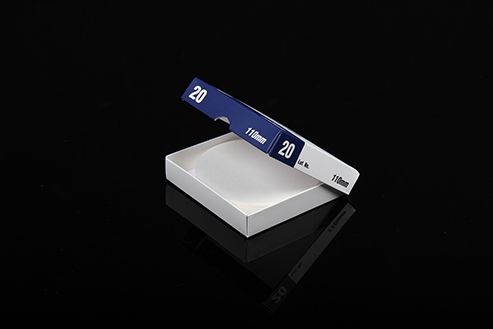Qualitative filter papers are originally used to detect materials which exist in analysis samples.
However, as they can be produced at a reasonable price and in various sizes, they are used for a variety of purposes from laboratories to production sites.
Features Of Product
Hyundai Micro’s qualitative filter papers consist of nearly 100% alpha-cellulose and have less than 0.1% of ash contents.
Characterized by their slim shapes. Enhanced wet burst strength They are available in any size you need as well as in standard sizes. We maintain the highest quality in accordance with ISO 9001:2008.
α-cellulose?
Alpha-cellulose is a main ingredient of pulp which is raw material for paper. It is divided into three types: α, β, and γ. Among these, α-cellulose is not soluble in solutions with 17~18% sodium hydroxide.
It has a high degree of polymerization and it is pure cellulose. Beta-cellulose is the soluble fraction which is reprecipitated on acidification of the solution; gamma-cellulose is that fraction remaining in the solution.
Applications
- Liquids purification in qualitative analysis
- Filtration of precipitate such as calcium hydroxide, lead sulfide and calcium carbonate
- Seed testing and Soil analysis
- Detection and measurement of dust and gas
- Filtration of buffer solutions and dye
Selecting The Right Paper
The selection of a laboratory filter depends on the conditions and objectives of the experiment or analytical procedure. The three most important characteristics of any laboratory filter are:
- Determine the precision of filtration
- Characters of liquids for filtration (pH, temperature, viscosity)
- Examine carefully conditions of particles to be sampled
(particle diameter, particle concentration)
- Low-cost filter papers for scientific experiments by students are available.
Grade
| NO.20 ( 5~8㎛ ) | NO.10 ( 6~10㎛ ) | |
requires preciseness as it filters precipitates well |
viscous solutions and bacterial culture medium
|
FEATURES |
General physico-chemical experiments
and filtration of nickel, sulfide and lead dioxide
(coal, cork, charcoal, etc) |
as oil and juice and scientific experiments |
APPLICATION |
| NO.200 ( 2~3㎛ ) | NO.2 ( 5~8㎛ ) | |
the slowest filtration speed
mixed in a large amount of liquid |
item No.2, Due to its strong burst strength, |
FEATURES |
metastannic acid, cuprous oxide, etc |
General physico-chemical experiments
antibiotic field
|
APPLICATION |
| NO.21 ( 8~12㎛ ) | NO.100 ( 3~5㎛ ) | |
such as lead sulfide, iron sulfide and |
speed, used for relatively precise filtration
N0.20, Available for pressure filtration |
FEATURES |
|
lead dioxide, calcium fluoride, zinc sulfide etc |
APPLICATION |
| NO.22 ( 12~15㎛ ) | ||
aluminum hydroxide and chromium hydroxide
|
FEATURES | |
|
APPLICATION |





